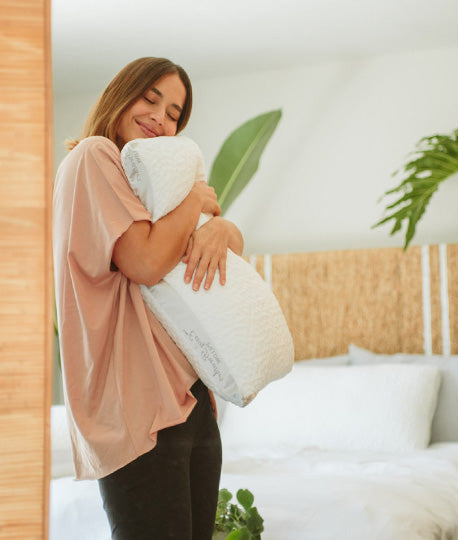One of the most consistent questions customers will ask when shopping for a new mattress is, "What is the coil count?" It is usually a pretty good indication that the customer is lost and trying to find some factor to compare mattresses. However, it is an ineffective way to compare beds because it does not take into account the thickness of the coil, the material and processing, all factors in quality.
The same goes for sheet shopping. I can't tell you how often I get asked' "What is the thread count of your sheets?". Again, same thing as coil count: It doesn't take into account type of material, GSM, ply, etc. Here is some information to help you navigate these terms and understand what you are getting when you buy new sheets.
Thread Count: Relevant or Irrelevant?
Just what does thread count actually mean? Thread count is the total number of threads, both vertical and horizontal, found in a one inch fabric square of the sheet. The thickness and ply of the threads used also factor in to the feel of the sheets.
Understanding ply is will help understand why thread count is not the end all be all of sheet quality. The number of threads entwined in a single thread make-up the ply. The two common types of ply in most sheets are single-ply and two-ply fabrics. Single-ply fabrics use just one thread, while materials with two-ply consist of two threads entwined. The ply of the sheet fabric means the difference between a stated 250 and 500 thread count—with the 250 coming from single-ply and the larger 500 coming from two-ply.
Counting the entwined two-ply yarn as double the thread count is misleading as it does not mean the threads are finer, it simply means they are more twisted together, which does not actual improve the texture and feel of the product. Some companies even go as far as to use a four-ply technique to produce an really high thread count that makes little difference in the quality of the sheets. Consumers see this thread count and assume it means a higher quality sheet.
What other factors to consider when choosing a sheet?
Another aspect of the sheet to compare is thread thickness and thread quality. These are major factors when determining the ultimate feel or hand of the bedding. Finer threads made of high quality strands typically create a soft, smooth and delicate sheet fabric. In fact, a 250 thread count sheet made of premium thread can be much more luxurious than a 500 thread count sheet with a lower quality thread.
Thread weave is another contributing factor. Three types of weaves, or sheet types, found at Nest bedding are:
- Flannel: Because of its warmth and softness, flannel is a good choice for cooler weather and feels soft to the touch..
- Percale: Made from organic cotton that is combed and carded, percale is a plain, tight woven fabric that is smooth, silky texture and feel.
- Sateen: Sateen has one of the softest hands, or feels, and has a shiny appearance. Sateen is made of a weave that provides more yarn surface on the cloth’s face and is our best selling sheet set.
So what is the best sheet? Sheet selection may depend greatly on your personal preference much more than the thread count. The type of weave and quality of thread, as well as the ply, factor together to produce the sheet, so it may be a mistake to choose your bedding sheets and duvet covers on thread count alone.
Thanks to a proliferation of information on the internet about how sheets are made, consumers are becoming better informed on the other factors involved in sheet construction and not so heavily on thread count. We recommend testing our sheets yourself to find the one that has the feel you desire and to seek out sheet sets made of higher quality threads like the sheets we carry at Nest Bedding.





